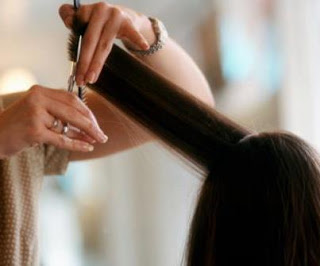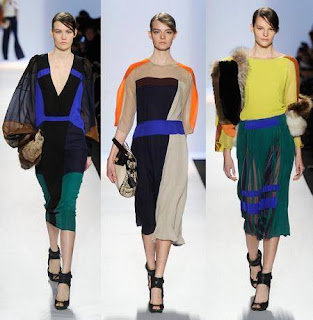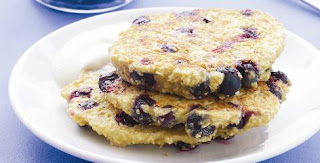Worst Beauty Trends of All Time
A recent study shows a little makeup goes a long way in terms of conveying competency on the job. Still, evidence alone doesn't seem to prevent us from testing the parameters of gorgeousity via wacky new ways to style our hair and paint our faces, which seem to deliberately contradict the rules of natural selection. Behold, the worst beauty trends to have emerged over the last half century.

Heavy Metals in Cosmetics Revealed
The researchers tested a total of 49 common products selected from the cosmetic bags of six average Canadian women. They found that every product contained at least one of seven heavy metals including arsenic, cadmium, lead, nickel, beryllium, thallium, and selenium. Lead, a known neurotoxin, showed up in 96% of the items.

Hair Care Tips For Long Hair
Oh, that long, shiny, bouncy shampoo-commercial hair -- we've all pined for it, but it seems like only a select few can actually achieve it. Most of us don't have a professional stylist at our beck and call.
So how can the average girl get her long locks looking lust-worthy? A lot of it is genetics, to be sure, but with these five tips, you can be on your way to shampoo-model hair -- or close enough, anyway -- in almost no time.
And for any of you who treasure your long hair but figure you'll soon have to part ways with it and fall victim to the dreaded "mom cut" -- you might think again after reading this article.
5: Don't Wash Your Hair Every Day
OK - we know what you're thinking: "But won't my hair get all gross and greasy?" Yes -- if your hair is used to being shampooed every day, it'll take time to adjust. But the greasiness will be temporary, we promise! Once you get over the hump (in about a week), you'll find that your hair looks a whole lot healthier. Daily shampooing actually strips your hair of its natural oils, which dries it out and leaves it more vulnerable to the elements. If you give the shampoo a rest once in a while, the oils will have a chance to come back, making your hair more shiny and bouncy. And, hey, it's cheaper, too!
4: Get Regular Trims
This might sound counterintuitive, but you need to keep up with haircuts, even when you have long hair. It's not true that regular trims will make your hair grow faster (how did that one get started, anyway?), but they will help your hair look healthier. Long hair more easily looks damaged than shorter hair does, so you should get those split ends snipped every two to three months. Not so much that you compromise your beautiful, flowing locks, of course, but just enough to spruce things up. Strengthening shampoo and a once-a-week deep conditioning will also keep those pesky ends looking perky.
3: Don't Blow-dry
Your Hair When It's Wet Say what? Isn't that what a hairdryer's for, you ask? Well, kind of. The general rule of thumb is to wait for your hair to be about 80 percent dry before you pull out the dryer, and that's extra-important for long hair -- more heat exposure causes more damage. So, after you get out of the shower, pat (don't rub!) your hair with a towel, apply styling lotion and detangle your hair with a wide-tooth comb. Then hang out, get dressed, do your makeup, do whatever you need to do while your hair air dries. If you're crunched for time, go ahead and use medium heat to pre-dry your hair, but don't start the serious work until it's almost dry.
2: Skip the Roots
The more hair you have, the more product you need, right? Yes -- sometimes. If you have thick, wavy or otherwise unruly long hair, you probably need to be liberal with the styling products. But everyone else should ease up -- it's also true that the more hair you have, the more weighed-down and limp it can get. If your long hair is fine or straight, you should avoid your roots when applying conditioner or any other hair products. Your roots will end up lighter and bouncier when the product is concentrated where you need it most -- at those damage-prone ends.
1: Don't be Afraid if You're Over 40
There's an unwritten rule in our society -- let's call it the "Mom Hair Law" -- that dictates that all women of a certain age must chop off their hair. And while it's definitely true that long hair (like a bedraggled, waist-length blunt cut) can weigh down your face and prematurely age you, there are plenty of ways to do it right. The key is in a modern cut with all-over layers -- and a commitment to maintaining it. As we get older, our hair gets drier, coarser and thinner, so we have to put more effort into keeping it looking fresh. But does that mean you have to hack it all off? No way!
Tips n How To Add Color To Your Wardrobe
Tired of playing it safe in little black dresses? When you’re ready to explore the color wheel when it comes to fashion, here’s how to cheer up your wardrobe without looking like Rainbow Bright.
Little bright dress. Ready to break out of your LBD rut? Trade in your default little black dress for something in color. Yes, other hues can be stylish, too—just learn what flatters your skin tone (for example, certain browns and murky greens don’t do morenas any favors). It’s believed that colors can affect your mood and disposition, so don’t be surprised if you start feeling lighter and brighter along with your wardrobe!
Prep with pastels. If your wardrobe consists mostly of black, white, and 50 shades of gray, ease into the world of color by introducing pastels like blush pink, lilac, lemon yellow, spearmint, and powder blue. Even when used in the tiniest details of your look—in the camisole under your blazer, the piping on your dress, or the cardigan draped on your shoulders, the muted, sorbet hues instantly soften a severe minimalist palette.
Shoes that pop!. Nude pumps are a closet staple because they match practically any outfit, and are especially great with monochrome pastel looks. But for a delightful change, punctuate your power suit with brightly-colored heels for a pop of color! It’s sexy while still looking professional—be ready for the deluge of compliments.
Accessorize. Shy about wearing bright, attention-grabbing shades? Get your feet wet by using bold colors in small doses, like accentuating your all-beige outfit with a stack of multicolored bangles, a florescent skinny belt, or a chunky statement necklace (coral, turquoise or lime look great against black). Try unique accents, too, like a detachable Peter Pan collar in a contrasting color, or an Ikat-print purse instead of your classic designer bag.
Mix it up. Worried about matching the color of your shoes to your bag? Don’t let style challenges coax you back to head-to-toe black. These days, your bag and shoes no longer have to be matchy-matchy. Easy rule of thumb: when you want to avoid a color clash, keep the color accent on one piece (the bag or the shoes), then go neutral on the other.
When you’re brave enough, you can start experimenting with color-blocking: mixing two or three different bold shades in one outfit for maximum impact—the key is to pick complementary colors. When wearing prints, pick up the colors in the print and repeat them in your accessories to tie your look together.
Prints. When you’re more comfortable with color, it’s time to play with prints! You can play it safe by pairing a printed top with solid shorts or dark rinse jeans, or kick it up a notch by wearing a brightly-colored top and printed pants—busy-print bottoms are all the rage this season.
Ready to go all out? Surprise your friends in a printed jumpsuit or dress. It’ll be a welcome break from the monochrome suits hanging in your closet. Botanicals and tribal prints are your best bets and give a nice burst of color. But if you want to stick to your minimalist, clean aesthetic, pick geometric prints instead.
How To Distinguish Fake Bags
The only thing we love more than a nice handbag is getting a deal on a nice handbag. But it's so easy to be scammed! Counterfeit purses are tempting, but the truth is they're illegal, cheaply made, and a waste of money. And while Coach bags are currently the world's most popular handbags, they're also the most-imitated. So how can you tell real from faux? Here are their six tips to avoid falling for designer imposter bags:
Look out for obvious indicators
Spotting replica handbags used to be simple; check the hardware, logos and material. Lightweight metal accents, slightly skewed logos and cheap materials are still the first lines of defense for warding off fakes, but with today's higher-quality knockoffs, it's a case of needing steps two through six as well.
Seek brand-specific signs
Know the signs to look for in the specific bag. For instance, Marc Jacobs' zippers are embossed with either RiRi or Lampo and all Louis Vuitton bags made since the early '80s have a date stamped somewhere on the interior. Brand fanatics spend time spotting knock-off bags to protect their favorite designers' integrity, so a quick search before you buy will reveal specific tells for each high-end brand.
Beware of online trickery
When buying a handbag online, make sure it's from a reputable source. If sites are based in China, specifically Hong Kong, proceed with caution, as the country makes up 88.8 percent of the goods seized for Intellectual Property Rights by the ACG. Also, check the descriptions and reviews for signs of inauthenticity. If customer reviews say the bags aren't the real thing, then they likely aren't.
Find trustworthy resellers
Just because a bag is sold online, it doesn't mean it's fake. Authentic and vintage handbags are often sold on eBay; buyers just need to be smart in researching the seller. If the deal looks too good to be true, it usually is. A Chanel bag will never be $50, so use common sense. Certified resale sites also offer discounts on authentic bags.
Check for design flaws
A Burberry or Prada handbag will not have crooked stitching or unfinished edges. High-end brands take ultimate pride in craftsmanship, so no imperfect bag would leave their factory for a legitimate retailer. The leathers and fabrics of authentic bags will always be perfectly stitched and lined up, never crooked or gapped stitched.
Do your handbag homework
Before you spend big money on a big brand, make sure to check out the designer's website and/or retail store to make sure the styles you're looking at even exist. The only noticeable differences in some high-end imposters are styles and colors that were never made by the particular designer. If you've never seen a zebra Hermes Birkin bag on a celebrity, then it was probably never produced.
These tips should help you find great deals and avoid crummy knockoffs. If you can't afford the real deal, an authentic, quality purse from a lesser-known brand is better than fake leatherette Gucci bag that falls apart. Really.
Skin Care Diets
Your diet keeps your body slim and healthy, but its impact doesn’t stop there. The food you eat—from wrinkle-fighting antioxidants in fruits and vegetables to hydrating healthy fats in fish—may matter to your skin almost as much as it does to your waistline. Is your way of noshing helping or hurting your complexion? We asked top docs for their take on the face-friendliness of six popular diets. Read on to see if yours passes the beauty test, and find out how you can alter what you eat for A-plus skin.
The Mediterranean Diet
The lowdown: Fish, leafy greens, olive oil, and fruit are the stars of this heart-healthy diet. But the benefits don’t end there—eating Mediterranean may also protect against melanoma, the deadliest form of skin cancer, a recent Italian study suggests. On the cosmetic front, omega-3 fatty acids in fish help keep skin-cell membranes strong and elastic.
Olive oil, tomatoes, and red wine also have antioxidants that help block the chemical reactions that lead to sun damage, explains Leslie Baumann, MD, chief executive officer of the Baumann Cosmetic and Research Institute in Miami Beach, Florida.
Vegetarian Diet
The lowdown: Whether you skip meat and other animal products for your health, ethical reasons, or both, you probably eat more fresh produce and whole grains as a result—good news for your skin. The antioxidants in these eats neutralize the free radicals that contribute to wrinkles, brown spots, and other signs of aging.
Veggie diets tend to be low in fat, so incorporate ground flaxseeds and olive and safflower oils to help your skin retain water, making it more supple, Dr. Baumann says.
South Beach Diet
The lowdown: Cutting back on white bread, pasta, and refined sugar can also lower the stress hormone cortisol and minimize breakouts, says dermatologist Francesca Fusco, MD. Plans that swap in whole grains, fresh produce, and lean meats also up antioxidants, blemish-busting zinc, and collagen-building protein.
But beware of meat-heavy plans. "Too much animal fat can result in an increased production of free radicals, which are thought to interfere with normal cellular processing," says aesthetic dermatologist Lisa Airan, MD.
Drink lots of water to keep skin hydrated. Choose fish and other lean proteins, not just red meat. Eat antioxidant-rich leafy greens daily.
Low-fat Diet
The lowdown: Cutting down on saturated fat is great for your heart and waistline. A diet low in animal fat also stems the production of free radicals that can prematurely age skin, Dr. Airan says.
Still, your skin needs some fat, especially the good kind found in nuts and olive oil. Fat helps your body absorb complexion-friendly antioxidants and fat-soluble vitamins, and strengthens cell membranes—and ultimately your epidermis—for a dewier, more supple face.
"Get at least 20% of your calories from fat, mainly the unsaturated kind," says dermatologist Cheryl Karcher, MD.
Raw-food Diet
The lowdown: Raw-foodists—who nosh mainly on produce, nuts, and sprouted beans and grains—believe that not cooking food preserves its natural enzymes, aiding digestion, energy, and weight loss. Though these claims aren’t universally accepted by doctors, there’s no denying that these foods make for a happy complexion. What’s more, the healthy oils in nuts, avocados, and olive oil keep skin cell membranes strong and pliant. The downside: "When you eat very little meat, it’s challenging to get enough of the building blocks for collagen," Dr. Airan says.
CarbLovers Diet
The cornerstone of Health’s signature plan is Resistant Starch (RS), a type of carbohydrate that acts like fiber, moving through the digestive tract without being fully digested, absorbed, or converted to glucose. Piling your plate with RS foods boosts metabolism and keeps you fuller longer, which helps you steer clear of skin-damaging foods, such as fat- and sugar-laden snacks, while lowering blood sugar and insulin levels.
The result: a happy body and clearer skin, Dr. Karcher says. CarbLovers also provides lots of skin-smoothing omega-3 fatty acids, antioxidant-packed whole grains, and collagen-building protein.




 Biyernes, Agosto 31, 2012
Biyernes, Agosto 31, 2012
 Lecor Martineau
Lecor Martineau






















